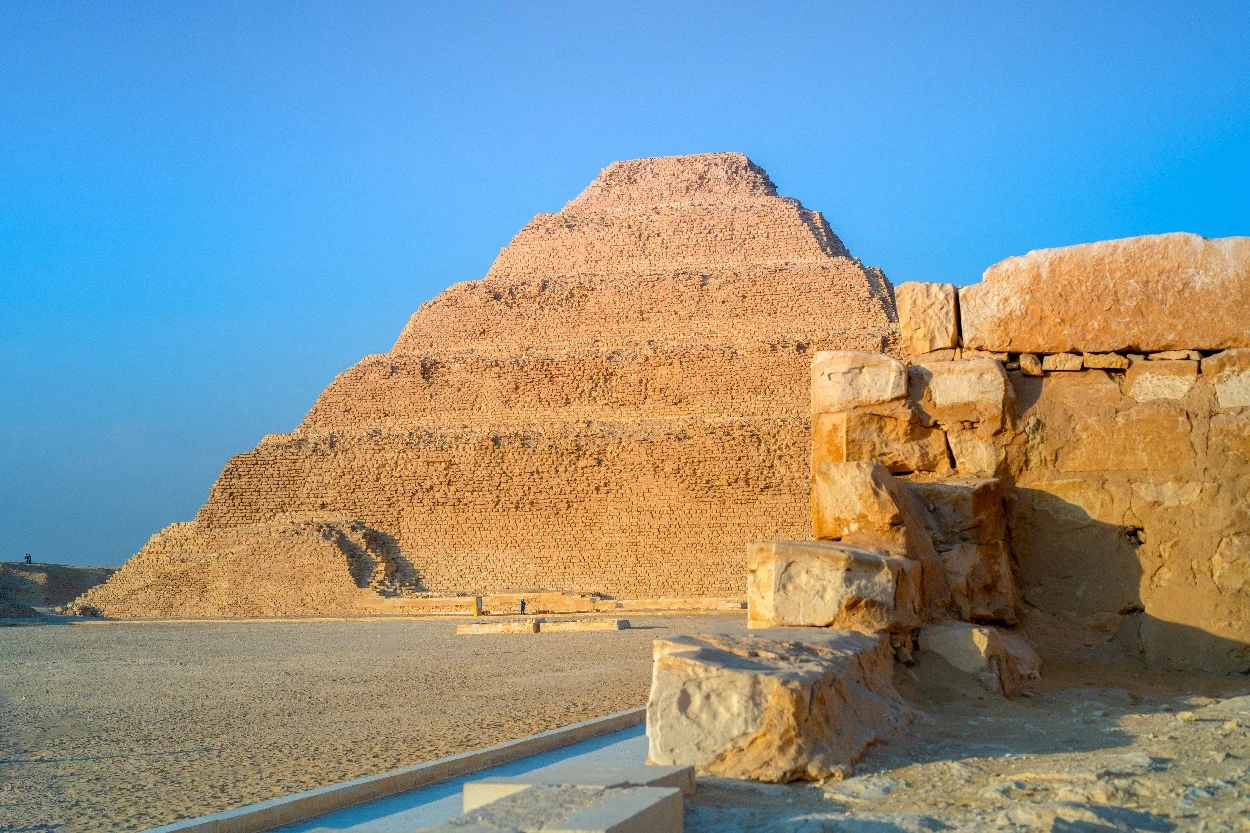A recent study, published in the journal ResearchGate, proposes that the Pyramid of Djoser could have been constructed using hydraulic lift.
The Pyramid of Djoser, also known as the Step Pyramid, is a proto-pyramid built as the final resting place of Djoser, the first or second pharaoh of Egypt’s 3rd Dynasty (2670–2650 BC) during the Old Kingdom period.
The pyramid rises from the Saqqara plateau in six steps to a height of around 60 to 62 metres, serving as the centre of a vast mortuary complex.
Due to the absence of authentic sources from the pyramid architects’ working sphere, there is currently no confirmed comprehensive model for the method used in the pyramid construction.
The prevailing theory suggests that the heavy stone blocks were transported on apparatuses such as rollers, and raised to height using a series of ramps.
In the study, a survey of watersheds near to the pyramid indicate that the Gisr el-Mudir (enclosure) has features of a check dam for trapping sediment and water. Furthermore, the topography beyond the “dam” shows a possible ephemeral lake west of the Djoser complex, and water flow inside the moat surrounding it.
The study authors explain: “In the southern section of the moat, we show that the monumental linear rock-cut structure consisting of successive, deep compartments, combines the technical requirements of a water treatment facility: a settling basin, a retention basin, and a purification system.”
Based on this finding, the study proposes that the Gisr el-Mudir and moat’s inner south section worked as a unified hydraulic system for regulating flow and improving water quality. In addition, the pyramid’s internal architecture is consistent with a hydraulic elevation mechanism never reported before.
“The ancient architects likely raised the stones from the pyramid centre in a volcano fashion using the sediment-free water from the Dry Moat’s south section. Ancient Egyptians are famous for their pioneering and mastery of hydraulics through canals for irrigation purposes and barges to transport huge stones. This work opens a new line of research: the use of hydraulic force to erect the massive structures built by Pharaohs,” said the study authors.
Please note: This study was submitted to PLOS ONE on December 7, 2023. After two rounds of review by peers, the paper was formally accepted by PLOS ONE on June 27, 2024. Since July 23, 2024, it has been the subject of new consultations and review by the PLOS ONE Editorial Board.
Header Image Credit : Shutterstock
Sources : ResearchGate | Piton, Guillaume. (2024). On the possible use of hydraulic force to assist with building the Step Pyramid of Saqqara. PLOS ONE.





